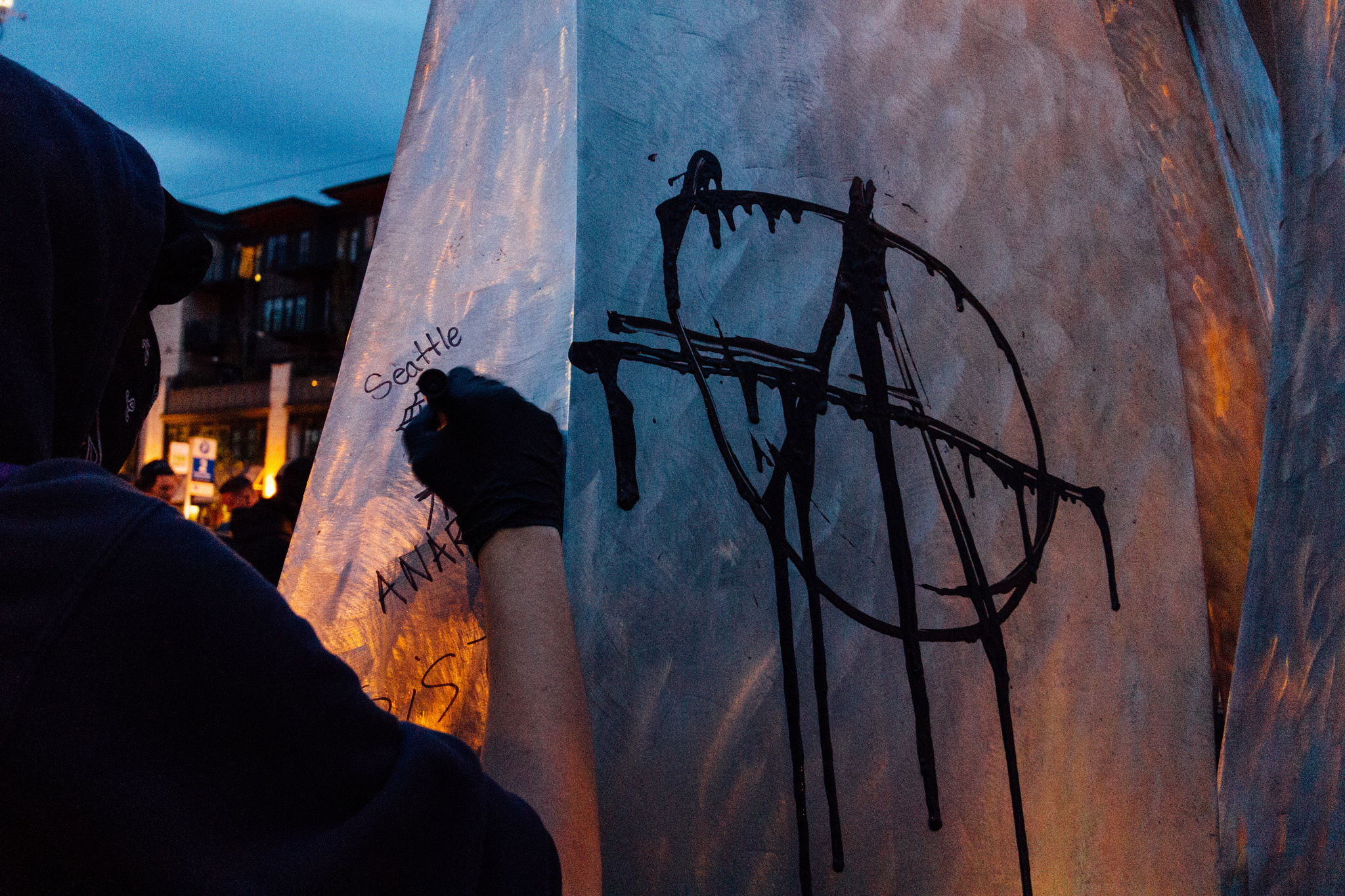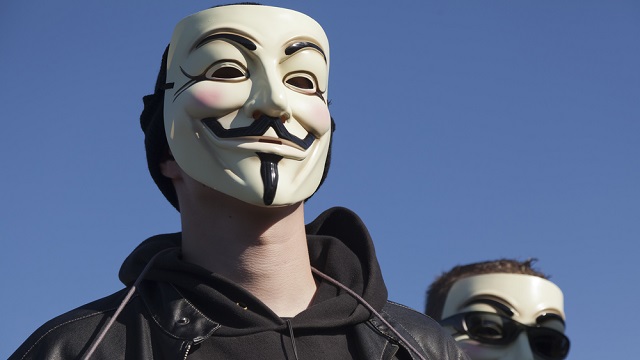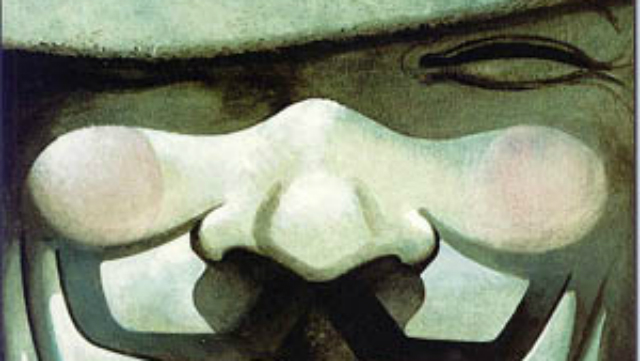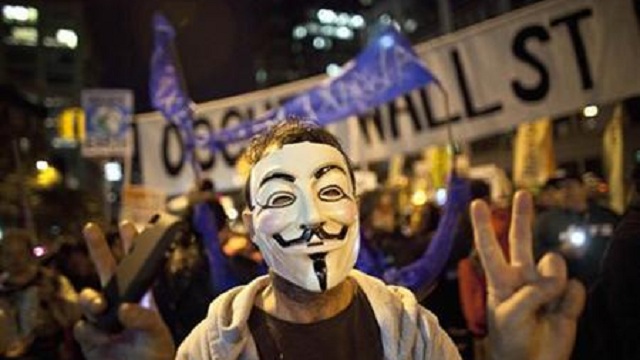One Face Has Unified Global Protest. Here’s How It Came to Be.
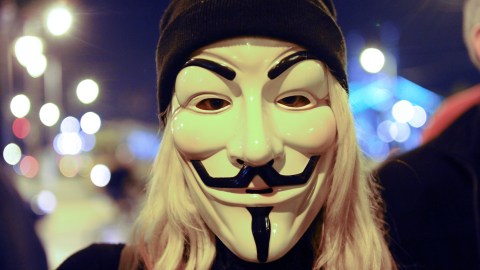
The Guy Fawkes mask has become a symbol of post-modern protest against tyranny. Many don the mask that bears his cartoonish likeness — a man with rosy cheeks and a wide grin. The image conjures up thoughts of “hacktivist” group Anonymous and Occupy Wall Street. But do you know the history of how the mask came to be?
“Remember, remember the fifth of November, gunpowder, treason and plot. We see no reason why gunpowder treason should ever be forgot!”
Many Americans grew up knowing nothing of this English nursery rhyme or the significance of November 5th in British history — I certainly didn’t — but then I read Alan Moore’s graphic novel V for Vendetta, which was released in 1982.
“The Guy Fawkes theme was the idea of David Lloyd, the comic’s illustrator, who commented that Fawkes should be celebrated rather than ritually burnt,” wrote Tom Ough of The Independent. He turned the Guy Fawkes mask into the symbol it is today. But it wasn’t until the movie’s release in 2005 that the mask would reach a wider audience.
“After that, it wasn’t long before the character’s enigmatic Time-Warner trademarked leer appeared masking the faces of Anonymous protesters barracking Scientologists halfway down Tottenham Court Road,” wrote Moore in a piece for the BBC. From there, it moved into the global lexicon as a symbol to unify and protect protesters.
Lloyd commented that the mask was a “convenient placard to use in protest against tyranny. … It seems quite unique, an icon of popular culture being used this way.”
But who is Fawkes and what was his story?
There is some controversy to consider about the origins of the iconic mask that may already be apparent. Namely, in the character V from V for Vendetta; he used terrorism and violence to overthrow corruption and create change.
Back in 1605, Fawkes was part of a Roman-Catholic group. Their plan was to blow up parliament in an attempt to assassinate King James I during the state opening. James I, you see, was a Protestant and getting rid of him would allow his 9-year-old Catholic daughter to rise to power. But the plot was foiled when an anonymous letter was sent to the King telling him of the conspiracy. Fawkes was caught in a cellar under parliament with 36 barrels of gunpowder. He, along with his conspirators, was tortured and hanged for their crimes in 1606.
Out of this event, Guy Fawkes Night or Bonfire Night was born — a tradition where British citizens light bonfires and burn effigies of Fawkes. However, all across the globe the symbol of Fawkes has become popularized and transformed, thanks to Lloyd.
There is some controversy to consider about the origins of the iconic mask that may already be apparent. Namely, in the character V from V for Vendetta; he used terrorism and violence to overthrow corruption and create change. When reading the comic, Big Think‘s Tauriq Moosa points out, the question readers are “forced to ask is whether, all along, we were supporting someone who was essentially a terrorist, a murderer, and assassin.”
However, by the end of V for Vendetta, the citizens are left with the choice to continue to sit on the couch and do nothing or become free. Their world has been changed through the actions taken by V, but they have a choice of how to shape it. In the comic, the city succumbs to chaos and only V’s successor, Evey, dawns the Fawkes mask. Whereas in the movie the public embodies the spirit of V, taking up the mask and gathering in solidarity, becoming the many against tyranny and oppression.
“It … seems that our character’s charismatic grin has provided a ready-made identity for these highly motivated protesters, one embodying resonances of anarchy, romance, and theatre that are clearly well-suited to contemporary activism, from Madrid’s Indignados to the Occupy Wall Street movement,” wrote Moore.
—
Natalie has been writing professionally for about 6 years. After graduating from Ithaca College with a degree in Feature Writing, she snagged a job at PCMag.com where she had the opportunity to review all the latest consumer gadgets. Since then she has become a writer for hire, freelancing for various websites. In her spare time, you may find her riding her motorcycle, reading YA novels, hiking, or playing video games. Follow her on Twitter: @nat_schumaker
Photo Credit: ATTILA KISBENEDEK / Getty Staff
